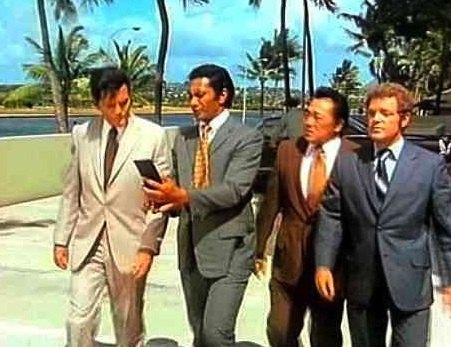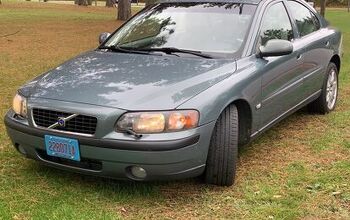Hawaii: Supreme Court Questions Laser Gun Accuracy
On Wednesday, the Hawaii Supreme Court overturned a speeding conviction because the state failed to prove that its laser speed guns were functioning properly. On September 5, 2007, Honolulu Police Officer Jeremy Franks stopped motorist Abiye Assaye, accusing him of driving 90 MPH on the H-1 freeway. Because the charge of driving 35 MPH over the limit carried the possibility of jail time, Assaye was represented by a public defender. At trial, Officer Franks gave the familiar and well-rehearsed testimony about how he had been properly trained in the use of the LTI 20-20 Ultralyte speed gun and how, in great detail, the device’s self-test had been performed. As soon as Franks concluded that his lidar gun was “functional,” Deputy Public Defender Summer M. M. Kupau objected that the state had laid no foundation establishing the accuracy or proper maintenance of the device.
The evidence showed that over the course of fifteen months, Franks used his lidar gun daily but never once had it checked or inspected by an expert. Instead, when it was not in use it was placed in the saddlebag of his motorcycle without concern for the effects of temperature and humidity on the device.
“The only maintenance that I do on it is clean the screen when it gets smudgy and change the batteries when they get weak,” Franks testified.
Citing the precedent laid down by the court of appeals in the speeding case Hawaii v. Stoa, the trial judge believed that this evidence was more than sufficient to convict Assaye. He imposed a $787 fine, a thirty-day license suspension and 36-hours of community service. The Intermediate Court of Appeals (ICA) agreed, but the high court found the appellate reasoning faulty in light of a 2007 drug case.
“We hold that the ICA’s decision in this case, and by implication its decision in Stoa, is obviously inconsistent with this court’s decision in [Hawaii v.] Manewa insofar as Manewa requires the prosecution to prove that the four tests conducted by Officer Franks were procedures recommended by the manufacturer for the purpose of showing that the particular laser gun was in fact operating properly on September 5, 2007,” Justice Paula A. Nakayama wrote for the majority. “Concluding that Officer Franks had tested the laser gun according to manufacturer recommended procedures would invite the same kind of assumption that this court expressly rejected as inadmissible hearsay in both Wallace and Manewa.”
The high court went further to insist that police officers must demonstrate to the court’s satisfaction that they are able to use a laser gun properly, instead of merely stating at trial that they took a four-hour course to obtain a certificate.
“Insofar as an officer’s training is concerned, we hold that the same burden of proof is applied to the issue of whether the officer is qualified by training and experience to operate the particular laser gun; namely, whether the nature and extent of an officer’s training in the operation of a laser gun meets the requirements indicated by the manufacturer,” Nakayama wrote. “Therefore, without a showing of the nature and extent of the ‘certification,’ testimony showing merely that a user is ‘certified’ to operate a laser gun through instruction given by a ‘certified’ instructor is insufficient to prove that the user is qualified by training and experience to operate the laser gun.”
Without an adequate foundation for the speed gun’s accuracy, the supreme court found the case against Assaye “devoid of any evidence” and reversed his conviction.
View the ruling in a 100k PDF file at the source link below.
Hawaii v. Assaye (Supreme Court of Hawaii, 9/30/2009)
[courtesy thenewspaper.com]
More by The Newspaper
Latest Car Reviews
Read moreLatest Product Reviews
Read moreRecent Comments
- Lou_BC Blows me away that the cars pictured are just 2 door vehicles. How much space do you need to fully open them?
- Daniel J Isn't this sort of a bait and switch? I mean, many of these auto plants went to the south due to the lack of unions. I'd also be curious as how, at least in my own state, unions would work since the state is a right to work state, meaning employees can still work without being apart of the union.
- EBFlex No they shouldn’t. It would be signing their death warrant. The UAW is steadfast in moving as much production out of this country as possible
- Groza George The South is one of the few places in the U.S. where we still build cars. Unionizing Southern factories will speed up the move to Mexico.
- FreedMike I'd say that question is up to the southern auto workers. If I were in their shoes, I probably wouldn't if the wages/benefits were at at some kind of parity with unionized shops. But let's be clear here: the only thing keeping those wages/benefits at par IS the threat of unionization.


































Comments
Join the conversation
RichardD You do realize the pulse is travelling at the speed of light, around 1 foot per nanosecond? So, that car at 1,000 feet gets painted and the pulse arrives back at the gun in 2,000 nanoseconds, or 2 millionths of a second. I don't care how many cups of coffee you've had, nothing human shakes that fast. As to maintaining a spot on the target for accuracy, the guns shoot pulses at 130 PPS. So, given an eyeblink is 100 milliseconds, you'd have 13 pulses in the gun in the blink of an eye. That's more than enough samples to derive distance travelled over a unit of time. Guys, these are photons. Much trickier little devils to thwart.
Mark out West, Read the link. The errors are documented, and even acknowledged to some extent by the UK DfT.